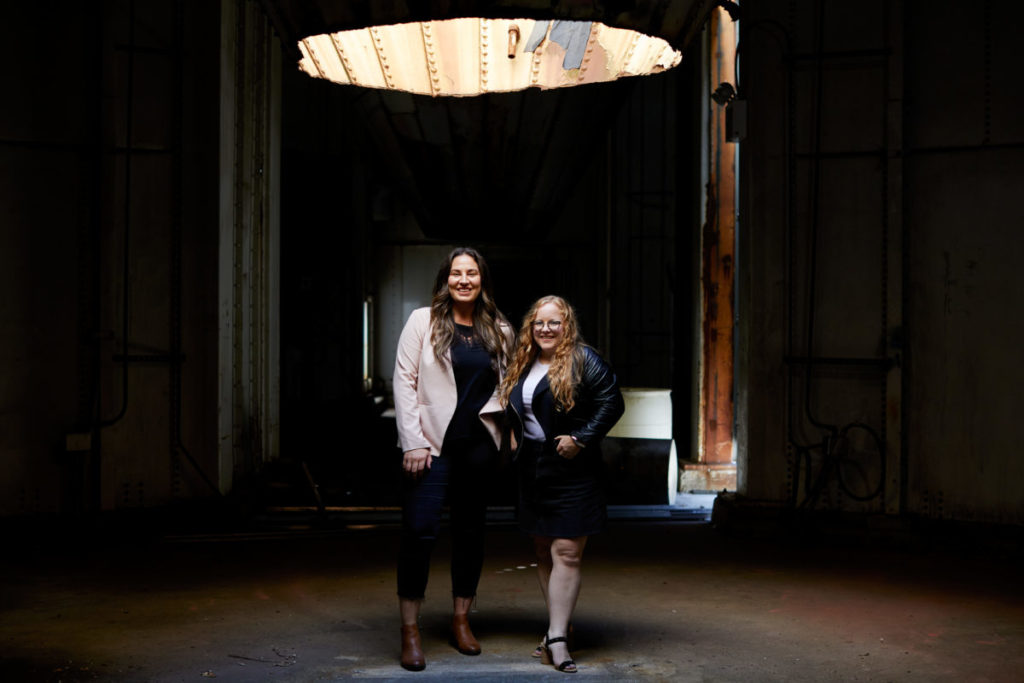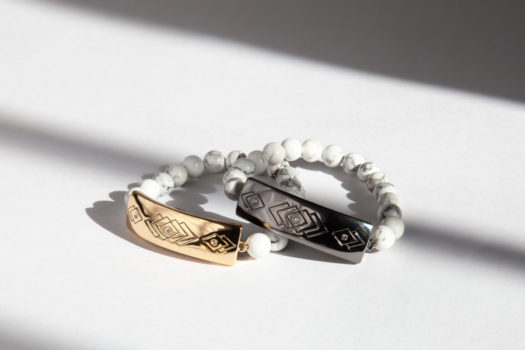
Safety is not often associated with autonomy, but that’s what the co-founders of Flare, a safety bracelet marketed toward women, want their customers to believe they have when it comes to getting out of sticky situations.
“So often, safety is framed around things that you can’t or shouldn’t do, or things that you did wrong,” said co-founder Sara de Zarraga. “There’s all this victim-blaming and negative connotation to safety when, really, we think about it as freedom, confidence. The more free that you are, the more choices you have. You can move through the world. You have agency.”
De Zarraga and fellow co-founder Quinn Fitzgerald, who met at Harvard Business School, have been credited with re-centering the conversation around how women can keep themselves safe in the modern world. They’ve come up with a luxury-looking bracelet that works with an app to alert family, friends or 911 with the push of a discreet button on the side of the cuff.
They launched their product, which runs $129 a pop, in 2017 with backing from actress Natalie Portman. In 2021, they sold out three times, and they say their bracelets have been activated over 25,000 times. The company declined to provide sales numbers.

Customers interested in the bracelet aren’t just thinking about “the stereotypical things, like walking down a dark alley or taking public transit,” said Fitzgerald.
“If you’re at home by yourself, if you’re getting a delivery, if you’re at work and somebody puts their hand on the small of your back — we felt there was a need for a tool that would give you options depending on what kind of situation you’re in,” she added.
The bracelet connects to a mobile app via Bluetooth, and users can push the button to trigger different communication preferences — it can prompt a phone call from an automated voice, text a family member or friend with the user’s location, or talk to an operator who will connect the user to 911. Authorities will get a live map of the user’s location and their personal information.
Everything can be customized and pre-programmed on the app, and users must be within 10 feet of their phones for the bracelet to work.
“It needs to be small and sleek and not call a lot of attention to itself,” said de Zarraga.
They’ve raised about $3 million to date from three rounds of venture capital funds, according to Crunchbase. Fitzgerald and de Zarraga said their customer base is broad and includes everyone from recent college graduates to women in their 50s and 60s who travel frequently for work.
“It’s been really powerful because we bring users together in our online community, and they’re able to share stories and support and perspectives across ages,” said de Zarraga.
Currently, Flare offers leather, beaded and cuff models, but the company is looking to expand to different styles of bracelets. They want potential customers to think of the bracelet as part of a “safety toolkit” that gives them another option for how to navigate harmful situations.
“There is an entire system behind the bracelet that gives them optionality and power to take agency in an uncertain situation,” said Fitzgerald. “Safety doesn’t mean one thing for everyone else. We all have different feelings and judgments that happen in these moments.”
Editor’s note: This article has been updated to correct sales and user figures originally supplied by the company.




